

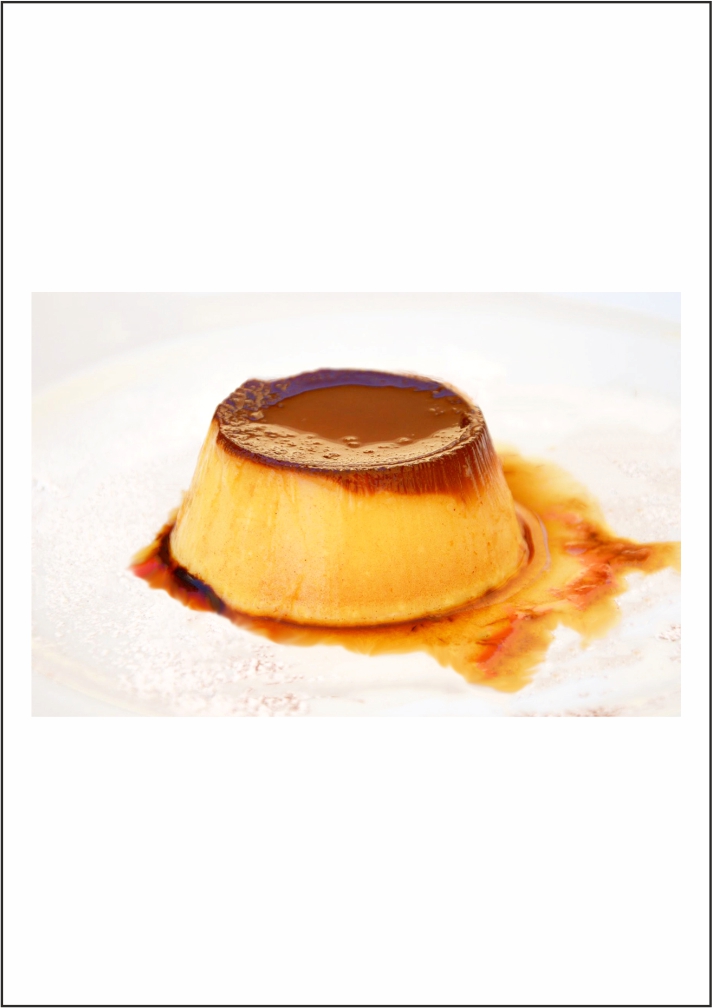
Pudding is today a preparation generally based on milk, sugar, flour and eggs, enriched with various flavoring ingredients; curiously, however, the term would not have been born to refer to a sweet recipe but to a savory one.
The etymology of the term pudding, in fact, derives from the Latin botellus, animal intestines which, originally, were used to prepare sausages or savory puddings with a rich energy value. From the vulgar diminutive botellinus derives the French boudin which originally still indicated a preparation of delicatessen. The Ménagier (end of the 14th century) describes the recipes for a boudin blanc (sausage) and a boudine noir (blood sausage), which in English cuisine then becomes (black) pudding. All these preparations would have evolved only during the eighteenth century into the types of sweet puddings known today, maintaining only the soft consistency of delicatessen products. The Italian term pudding is an adaptation of the English pudding (the form pudino or puddingo is documented in the eighteenth century) on which the French boudin probably also influenced: in fact, the form bodino appears for the first time in 1808 and in 1892 the current one.
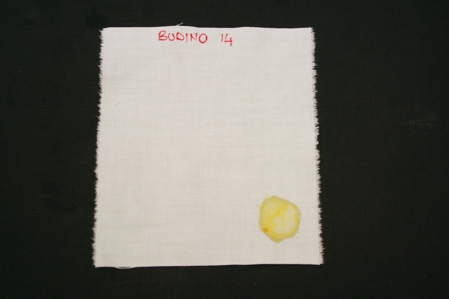 Tessuto macchiato
di Budino
Tessuto macchiato
di Budino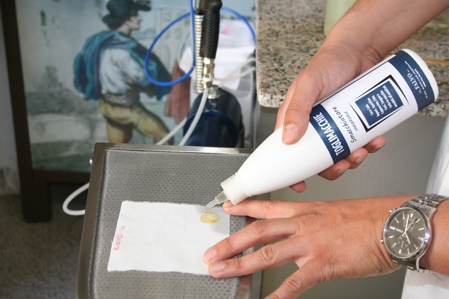 Versare IL TOGLIMACCHIE
sulla macchia di Budino
Versare IL TOGLIMACCHIE
sulla macchia di Budino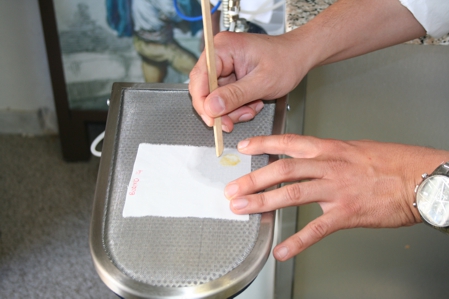 Strofinare con la spatula, nebulizzare acqua ed asciugare con aria compressa
Strofinare con la spatula, nebulizzare acqua ed asciugare con aria compressa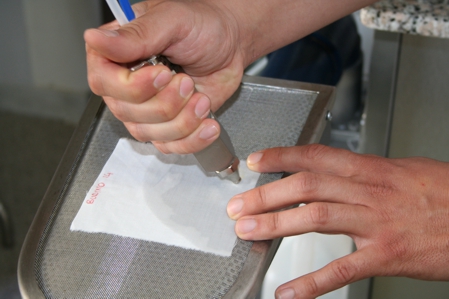 Nebulizzare nuovamente acqua se
dovessero rimanere residui di macchia
Nebulizzare nuovamente acqua se
dovessero rimanere residui di macchia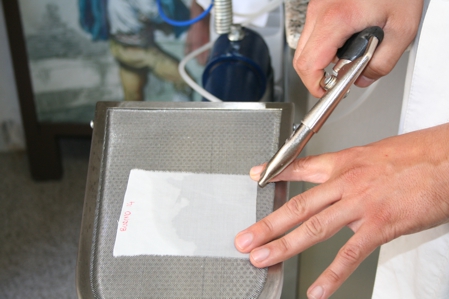 Strofinare con la spatula, nebulizzare ac-qua ed asciugare con aria compressa
Strofinare con la spatula, nebulizzare ac-qua ed asciugare con aria compressa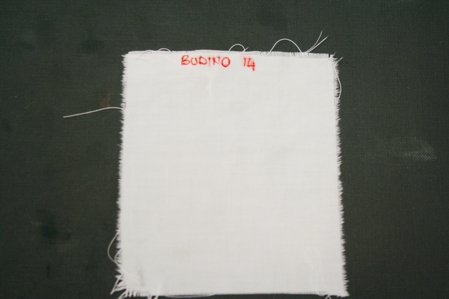 La macchia è stata rimossa e il capo può
essere lavato a secco o ad acqua
La macchia è stata rimossa e il capo può
essere lavato a secco o ad acqua